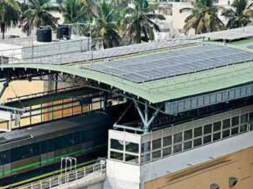
According to preliminary numbers from GTM Research, 59 gigawatts of solar PV were installed globally in 2015, a 34 percent increase over 2014’s total.
“The fourth quarter of 2015 showed that global PV demand is very much at the mercy of government support, which can often be unpredictable and idiosyncratic, leading to often negative but sometimes positive outcomes,” said Mohit Anand, a senior solar analyst with GTM Research.
With December’s extension of the federal Investment Tax Credit, we saw firsthand that a huge upswing is possible in the market with government support. According to GTM Research, the U.S. share of expected global PV demand between 2015 and 2020 has increased from an average of 10 percent to 15 percent due to the extension. This is despite a substantial increase in demand expected for the Asia-Pacific region (apart from China) in 2016 and beyond.
On the other hand, FIT pullbacks in Japan, the U.K. and China have tempered expectations.
GTM Research expects 64 gigawatts of solar PV to be installed globally in 2016, led by the United States and China. Emerging markets will play a prominent role. India will become more established as it becomes a reliable multi-gigawatt market this year, and Brazil and Mexico will be tested for their ability to meet their ambitions with actual project execution. Others like the Philippines, Pakistan and Bangladesh in Asia and Uruguay, Guatemala and Panama in Latin America will move forward and try to break through to 100 megawatts.
“We also have to keep in mind the importance of COP21 for the diversification of global markets for PV, especially across emerging markets in Asia, Latin America and Africa,” said Anand. “Many of those countries have pledged substantial goals for deploying renewables and mitigating climate change, and PV is seen as a quick, cost-effective and scalable opportunity within that.”
GTM Research forecasts the cumulative worldwide PV total to reach 321 gigawatts by the end of 2016.















